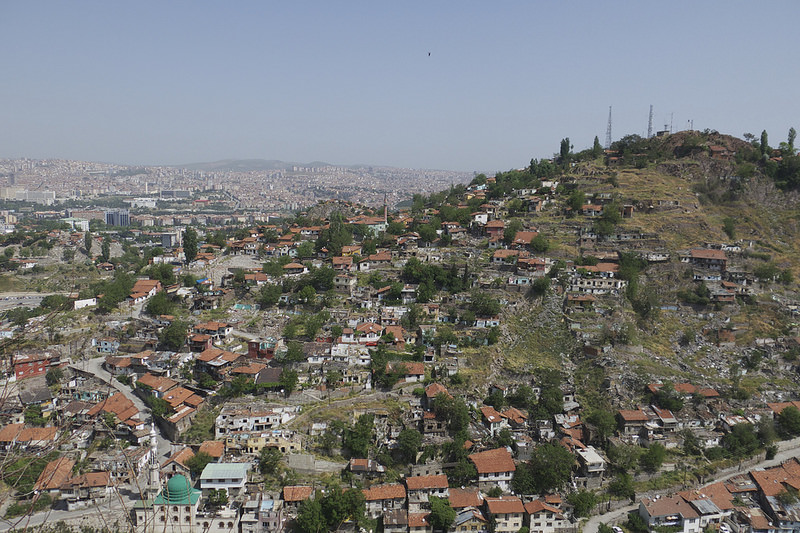We left Istanbul in a rental car, heading east through the central region of Anatolia. The road were very good, although there were a lot of tolls immediately outside the city, and for a while the scenery was a constant supply of new, 8-story apartment buildings lining the roadside, gradually making way for the Turkish countryside.
Our first stop was in the Turkish capital of Ankara, where we didn’t do much except explore the small old city before moving on toward Cappadocia. I’d seen a few photos of Cappadocia’s strange landscapes and “fairy chimney” features, volcanic rock formations formed after millennia of erosion.

For more than a thousand years, people have carved out homes and churches in a lot of these formations and caves, and also carved out dwellings for pigeons and doves so that they could harvest their droppings for fertilizer. Since we were there at the tail end of the rainy season, the area was surprisingly green. We got to stay in one of the area’s many cave hotels in the village of Uçhisar, near the castle.


We spent a day exploring the region around the Pigeon Valley. My favorite stop of the day was the underground city of Öskodar. To avoid the threat of invaders, many Cappadocians would retreat to elaborate underground cities carved out of the soft rock. A new one was just discovered last year, to add to the current list of about 35. We visited a smaller one that was discovered by a farmer (whom we met) on his property. It was one of the most incredible things I’ve ever seen in my life. The air was cool and shockingly fresh, and the rooms were connected by passageways probably four feet high, so that you had to crouch through them sometimes for as long as 50 meters.

We also visited a cave-church nearby that had a dungeon in it, accessible via one of these cramped tunnels. It was pitch-black inside, and the thought of being imprisoned in there was enough to make me head for the exit after just a moment inside.
The next morning we got up before sunrise for one of the most anticipated activities of our trip: a hot-air balloon ride over Pigeon Valley. I have wanted to do this ever since we went to the Festival de Globos in Léon.

I have a medium-grade fear of heights so I was nervous about the flight, but it wasn’t scary at all. We went in the typical tourist-grade balloon that carries 20 passengers, distributed into 4 quadrants of the basket, and it was surprisingly stable. The only scary parts were the few times when we ascended very quickly.

After two nights in Cappadocia, we headed back west through a more southerly route. This was more picturesque, with beautiful lakes and snow-capped mountains, of which I took no photos, since I was too engrossed in the podcast we were listening to, 12 Byzantine Rulers, which probably only could have been more enjoyable if we had listened to it before visiting Istanbul. On our longest day of driving, we covered 400 km from Konya to Pamukkale. In Konya we visited the Mevalana Museum, which is where the Whirling Dervish movement originated.

I had always thought that Whirling Dervishes were some kind of dancers, but I learned that their spinning was thought to bring them closer to spiritual epiphany–which strikes me as a very odd basis for a religious order.
Konya was notably much more conservative than Istanbul, and the city was very clean.
From Konya we visited Pamukkale, which means “cotton castle” in Turkish. The entire town exists because of this series of cascading white pools, formed by the calcium deposits over the millenia, and which have long been an attraction because of their thermal waters. It was similar to Hierve el Agua, which we visited in Oaxaca, although much bigger and whiter!

Atop the cotton castle lies the ancient (200 BC) city of Hierapolis.

We also visited the ancient cities of Afrodisias and Ephesus before returning our rental car near the port city of Bodrum, where we would depart Turkey for Greece!
For more of my Turkey photos, visit limpire.






